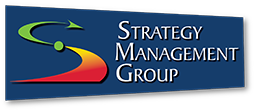
Dear Abby-Gail: How Much is Too Much?
There has been a lot of interest in my recent blog post: “Balanced Scorecard Gone Bad: What’s that Funky Smell?” Several people have posted comments and questions in various forums, but one in particular deserves special attention.
Dear Abby-Gail: I believe a key point in your message is that a strategy is never static due to external changes (e.g., competitor moves, new technologies), so it will require continuous adjusting. But this raises a different question. Since as strategic objectives change or the emphasis of what to accomplish within strategic objectives change, this means some KPIs may be dropped and others added (or their weightings may need to be tweaked). As a result, how much change in KPIs can an organization tolerate?
Dear Gary: This is an excellent question. When strategy changes, then KPIs will have to change. Organizational tolerance to change is affected by several things.
(1) Is the scorecard system engrained in the organizational culture such that management trusts the system and uses it to make decisions? If so, they will have relatively high tolerance for change in the KPIs because they understand that the change is necessary if they are to continue to rely upon the system to make strategically relevant decisions.
(2) Given that you know you need to adjust the KPI, how quickly can you achieve 7 data points on the new or adjusted KPI? In other words, is there baseline information available that will help you quickly establish an XmR chart? If not, can you achieve frequent enough reporting points to have useful trend analysis within 6 months? If you were using an excellent KPI in the past and then switch to one in which it will be a year (or more) before you have enough data for management to have the 7 data points needed to make statistically sound decisions, this will cause frustration and lower the tolerance for the necessary change.
(3) Can your software system handle these changes without losing your historical performance on the objective (assuming the objective does not change)? Knowing that you won’t be throwing away historical information increases tolerance for change.
(4) What about rewards tied to KPIs? How do your Human Resources processes link individual or group performance and incentives to KPI performance? What will be the result of changing a KPI right now? If it can’t be changed due to a covenant with employees, can it be removed from the calculation so that you don’t keep working towards an “expired strategy”?
I invite feedback from others. What else has impacted your organization’s tolerance for needed change in its KPIs? And does anyone want to share their tips for overcoming resistance to this sort of change?
For more challenges and solutions, we invite you to explore The Institute Way: Simply Strategic Planning & Management with the Balanced Scorecard.



 So articles about girls and math catch my eye. Did you know that researchers agree that one’s ability to excel at math and science is as much about
So articles about girls and math catch my eye. Did you know that researchers agree that one’s ability to excel at math and science is as much about 
 Ft. Sam Houston this week and had invited a special guest – Scott Hencshel – to address the group regarding the organizational challenges of implementing a balanced scorecard system within Army. (Scott’s command is also stationed at Ft. Sam Houston – Army Medical Department Center & School (AMEDDC&S), an Institute “
Ft. Sam Houston this week and had invited a special guest – Scott Hencshel – to address the group regarding the organizational challenges of implementing a balanced scorecard system within Army. (Scott’s command is also stationed at Ft. Sam Houston – Army Medical Department Center & School (AMEDDC&S), an Institute “